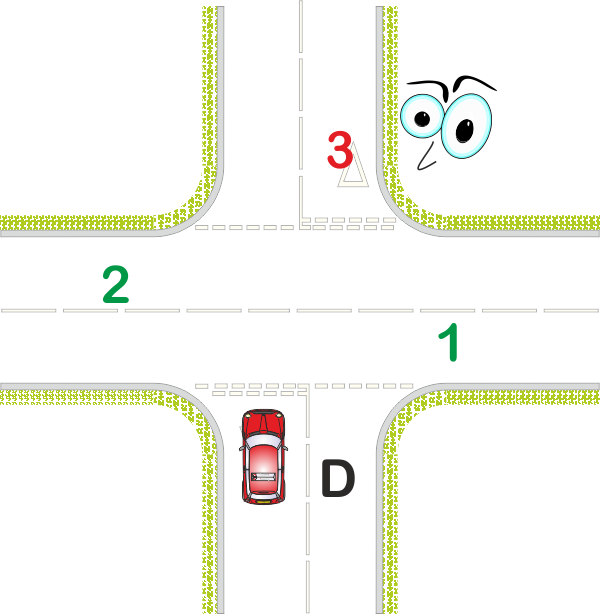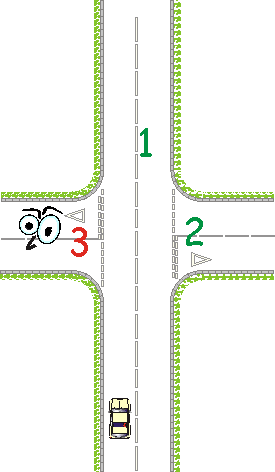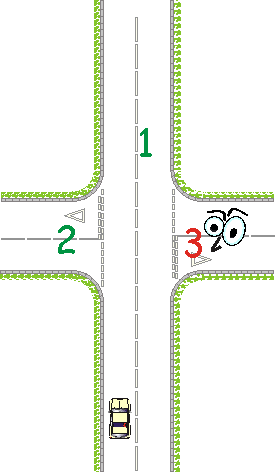Unit 4: Approaching to turn left
Unit 5: Approaching to turn right
Unit 6: Emerging to turn left and right

Unit 4: Approaching to turn left
Unit 5: Approaching to turn right
Unit 6: Emerging to turn left and right

The main difference between crossroads and other junctions is that there is an extra road to think about, therefore the main skill difference that you will be emphasising is that of observation (see below).
If you choose this lesson for your exam, your first opportunity to discuss 'crossroad skills' will be emerging from the car park. If you are lucky there will be a Gateway or other opening on the opposite side of the road. If not there may be parked vehicles or perhaps pedestrians. Be prepared to take control of the situation as you emerge from the car park making sure that your learner looks clearly to the right and left, you can do this by direct instruction or by asking questions based on their previous knowledge, for example:
"You covered emerging from T-junctions last lesson, so where you need to look to ensure that we can emerge safely?"
Even though any learner who is skilled enough to drive the car from the test centre will be skilled enough to emerge safely, they might not drive as you expect when there is an examiner in the back!
In addition to this bring in the crossroad skills...
"If this were a crossroad we would also need to be checking ahead (instructor points). A car might emerge or turn into the Gateway in front of us, the pedestrians opposite might decide to cross the road. Checking these things is the same as using your observation skills at crossroads."
If you have demonstrated and or explained the method for observation shown on the next page there is a good chance that your learners will get the first crossroad right without any input from you. Remember that they will have already mastered approaching and emerging at other junctions before doing this lesson. However, be prepared to ask question or prompt if required.
The most common instructional error is probably to pay too much attention to the road and not enough attention to the learner when arriving at the crossroads. (See the Watching the Learner section)

An easy way to teach observation at crossroads is to remember and how many roads there are to check. "Easy as One, Two, Three".
The most common observation problem at crossroads is to neglect observation into one of the roads. This can lead to failed 'L', ADI Part-Two and other driving tests - more importantly, it can lead to accidents. For example, you will often see emerging drivers looking right left and right at crossroads, but neglecting to check the road ahead. When turning from a major road to a minor road they will look ahead and into the road they intend to turn into but will neglect the third road...
And the third road is the one that makes teaching crossroads as "Easy as One, Two, Three" Simply explain that at a regular crossroad there are always three roads to check.
The diagram above shows typical observation when emerging. The driver checks roads 1 and 2 but neglects road three - or leaves the check until after the decision to emerge has been made and the car is moving.
In an approaching situation turning right into road '2' it would be the road on the left that would typically be neglected.

In an approaching situation turning left into road '2' it would be the road on the right that would typically be neglected.

Next: Crossroads practise